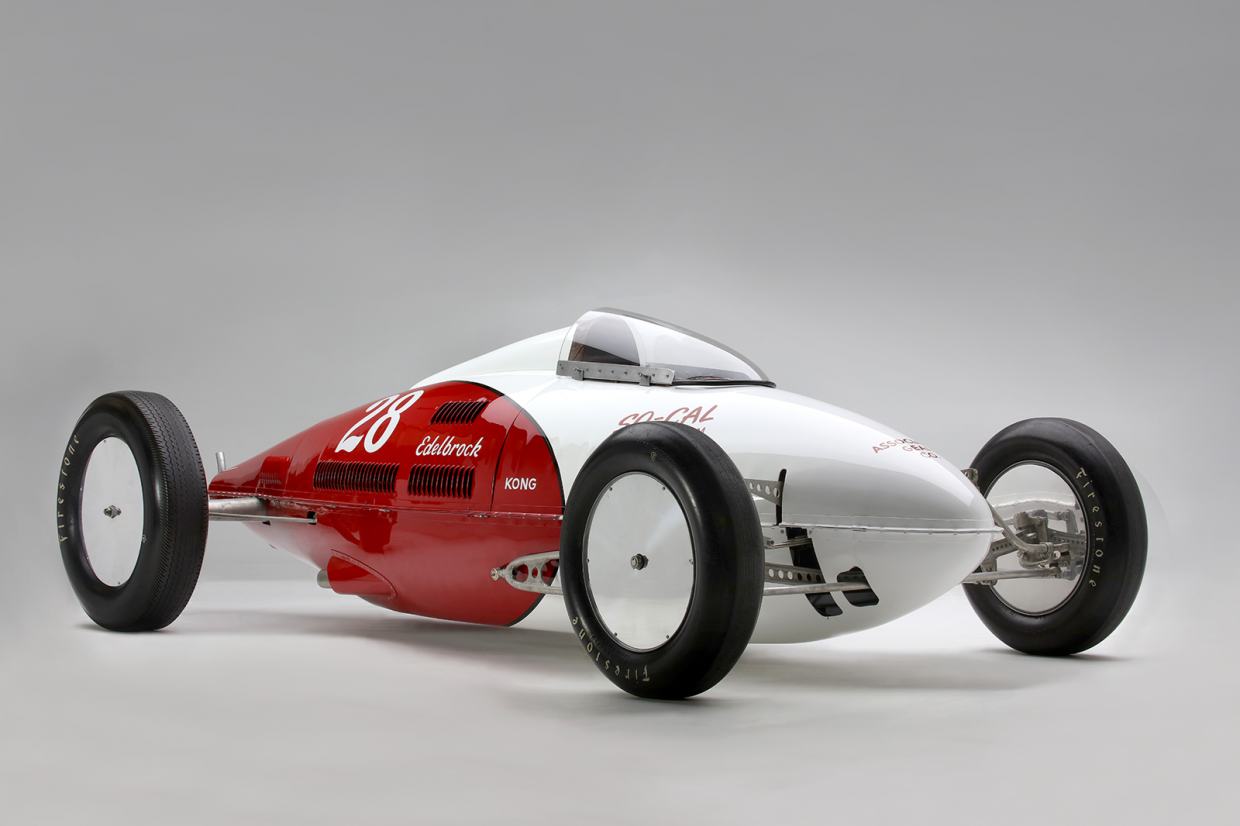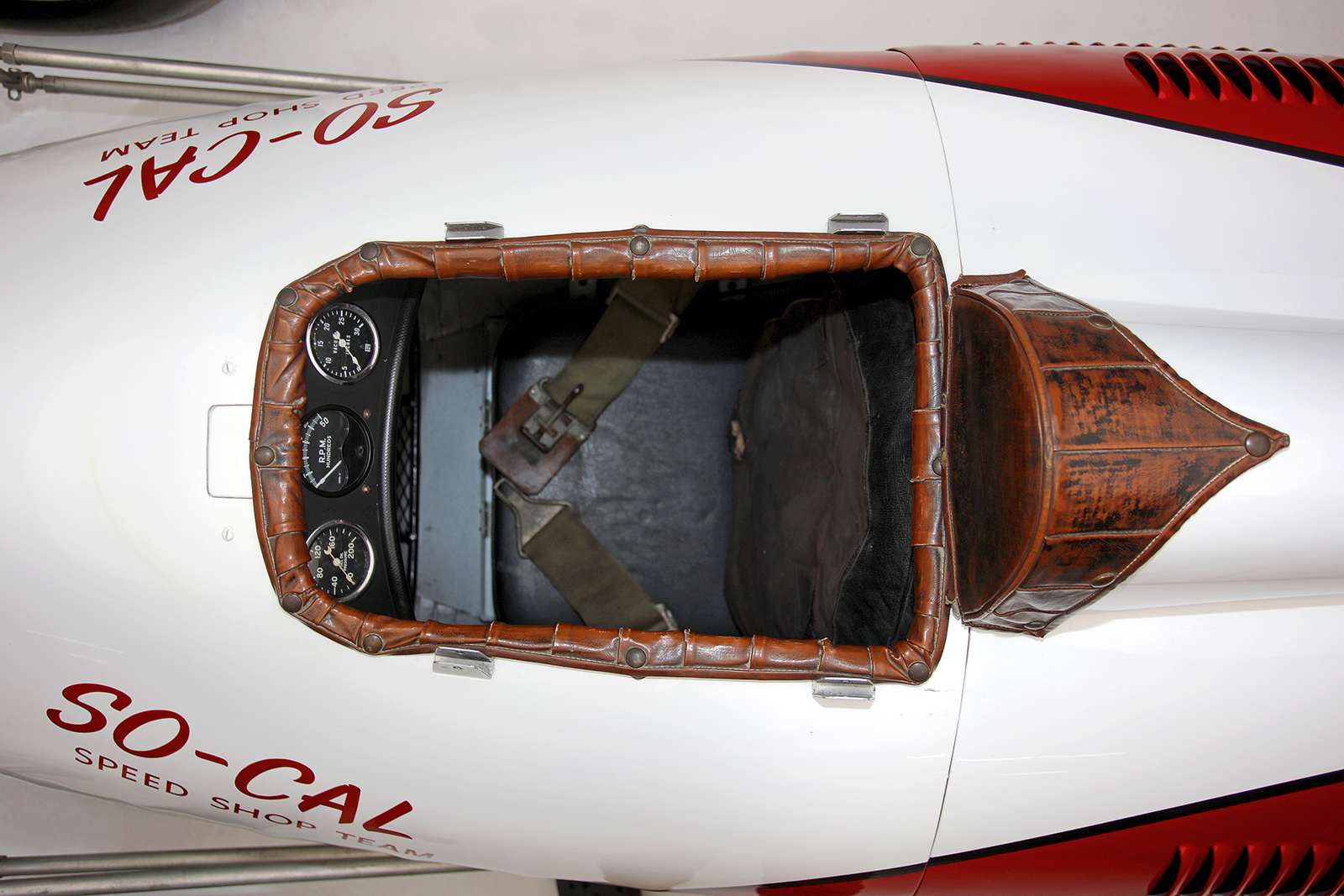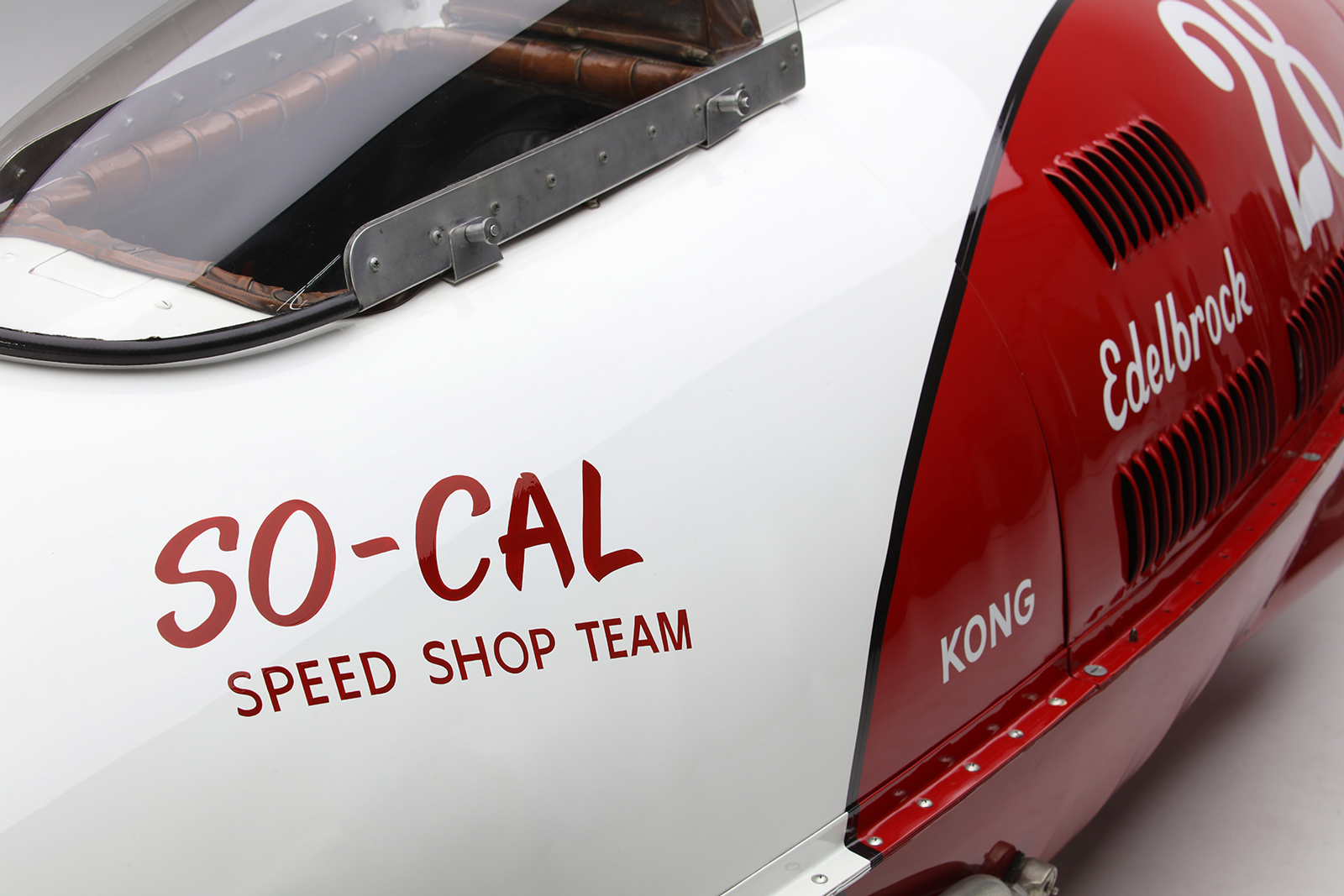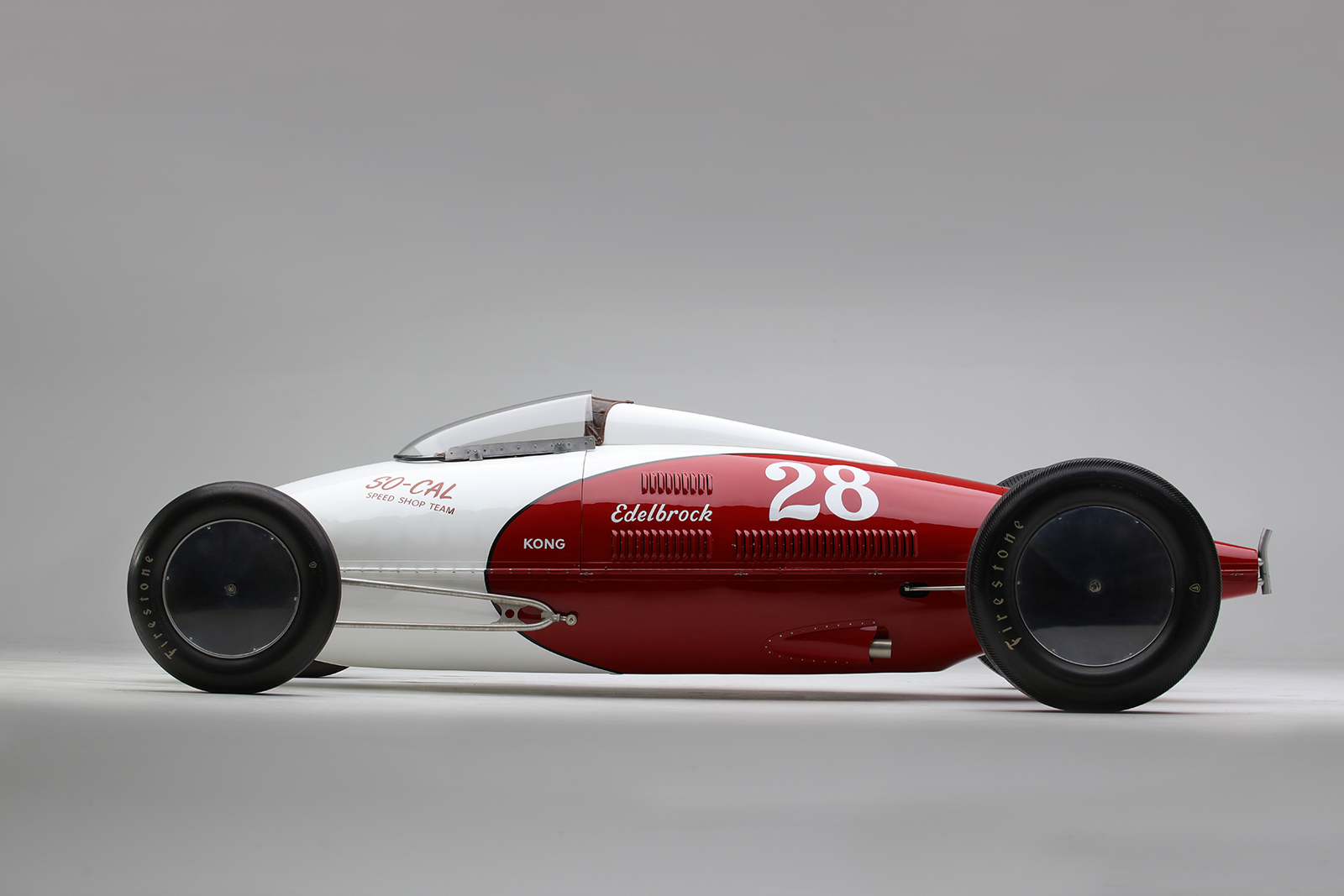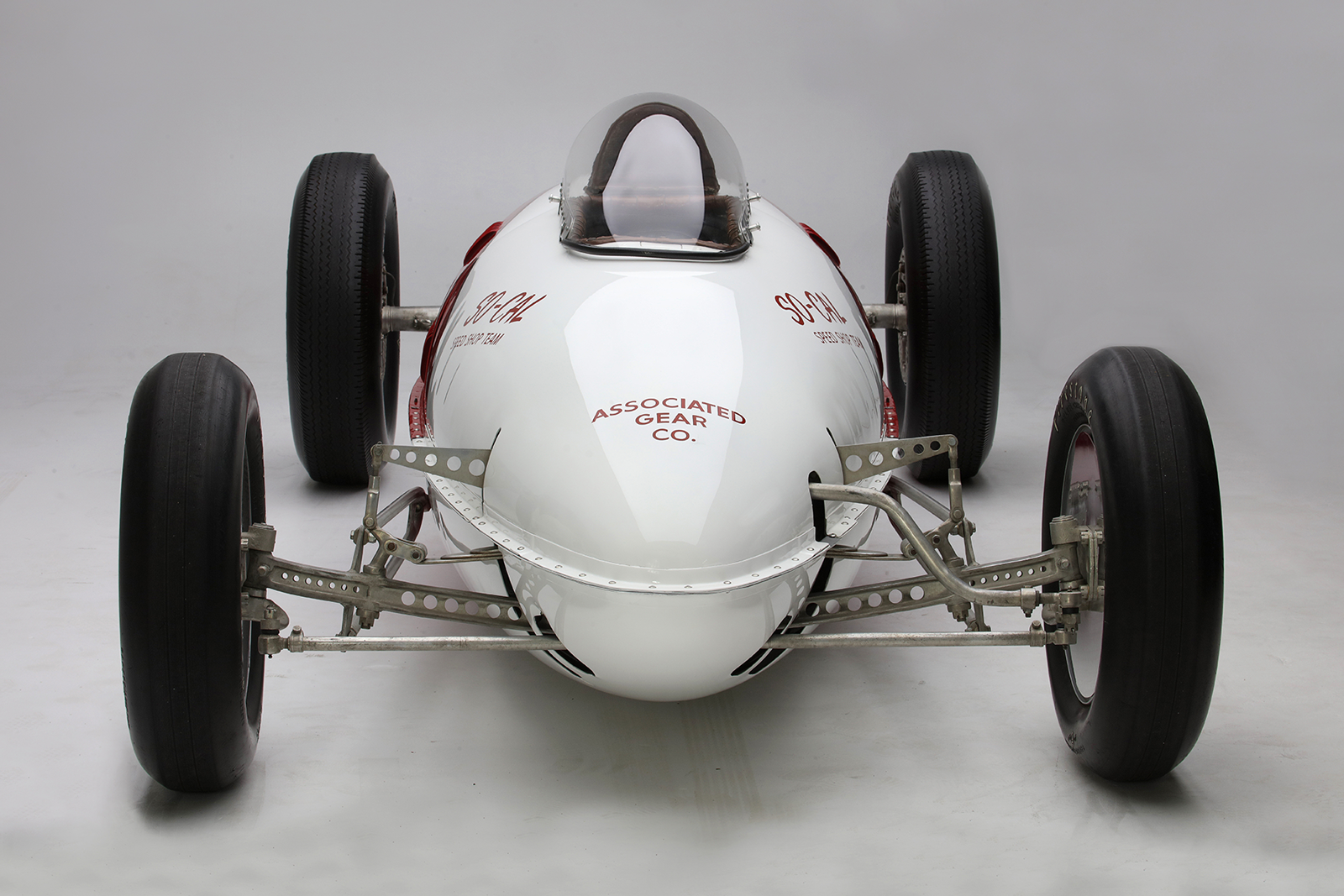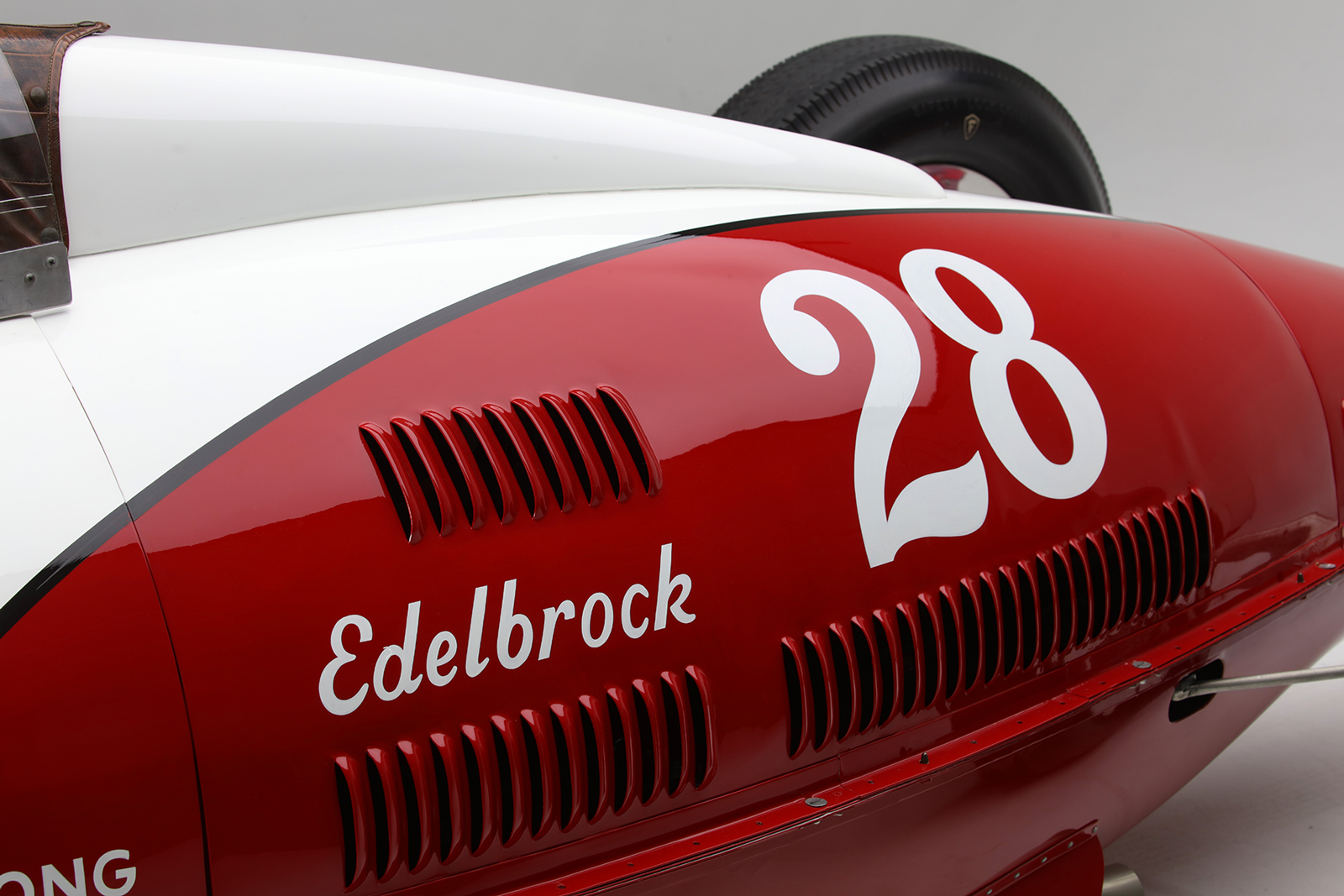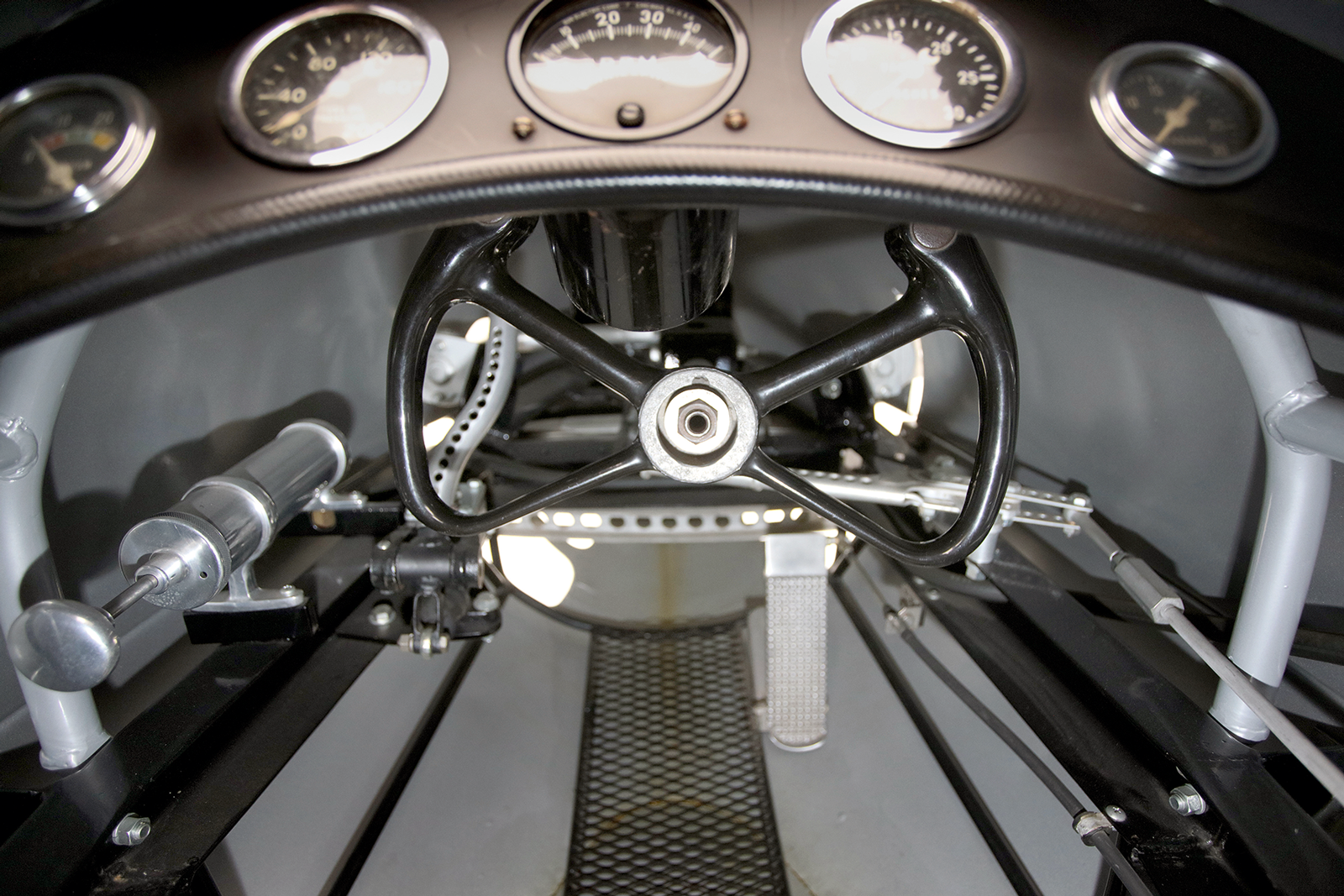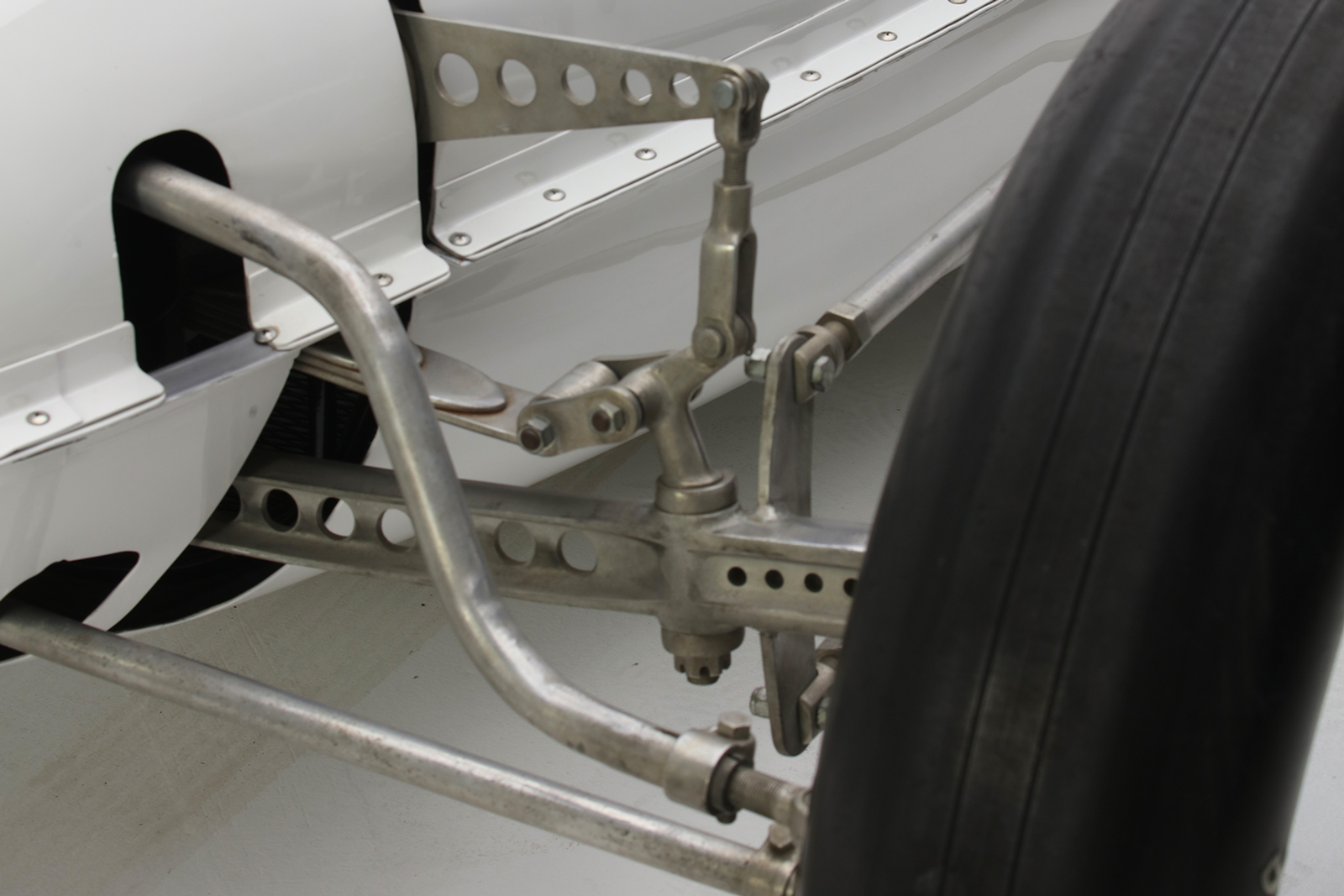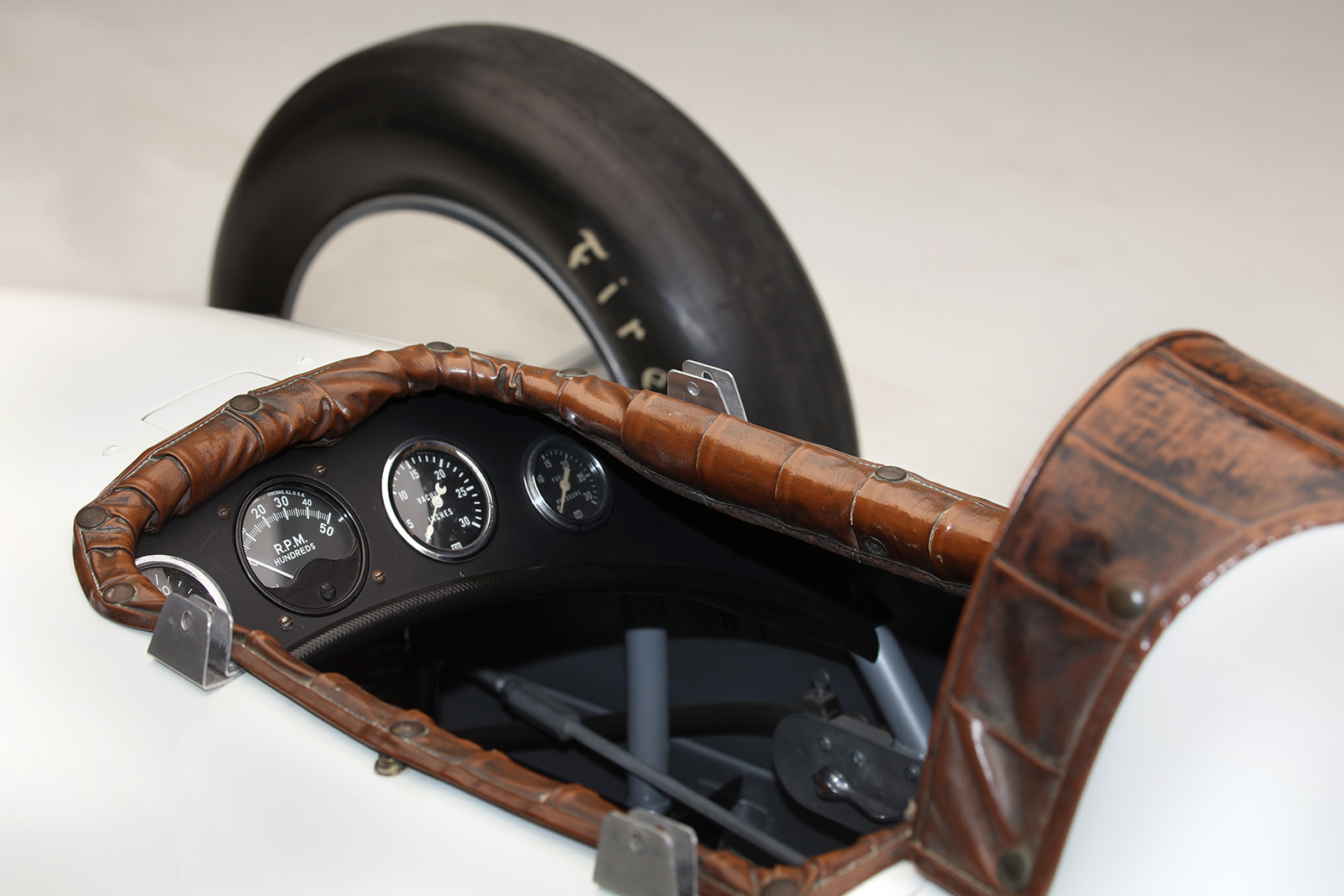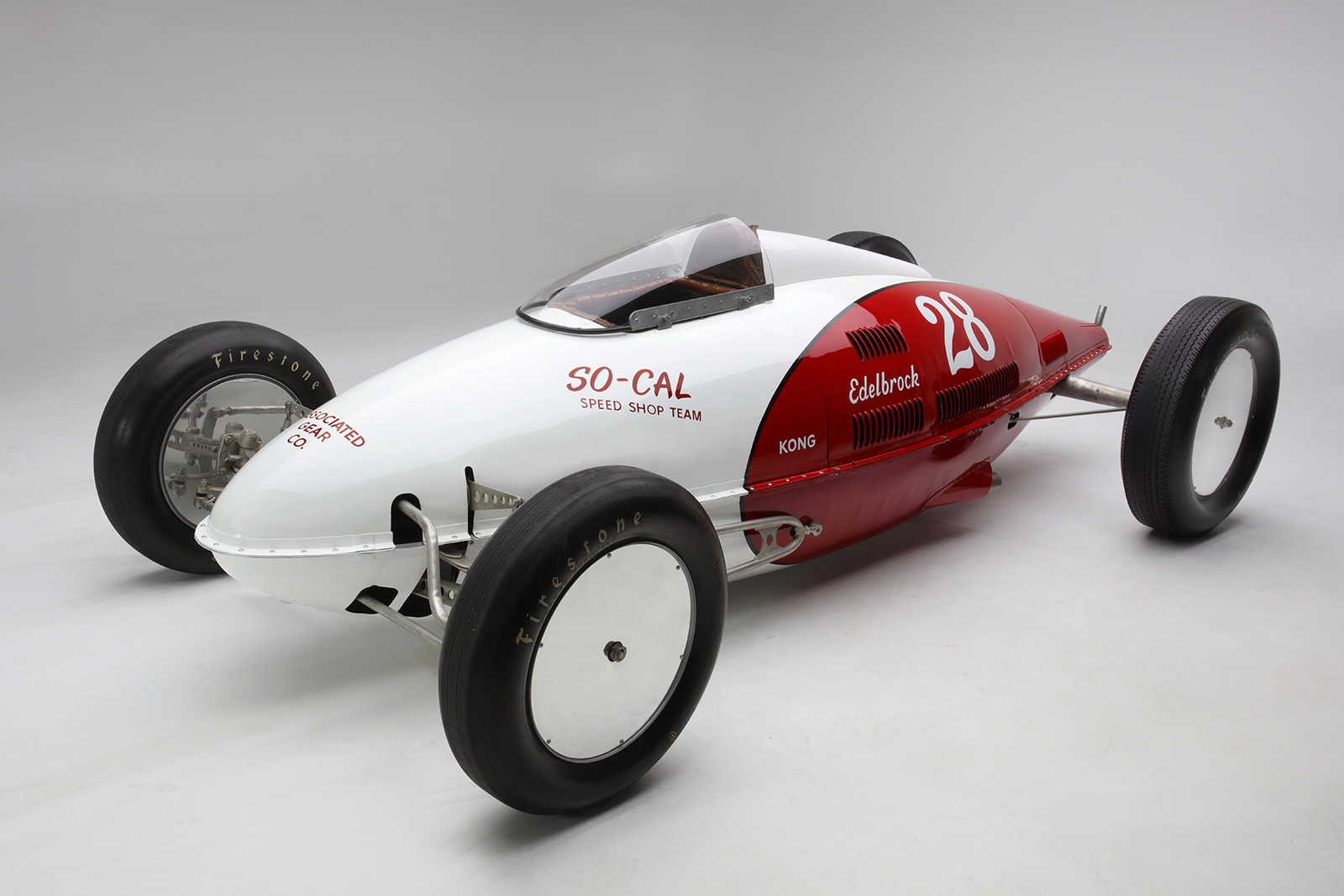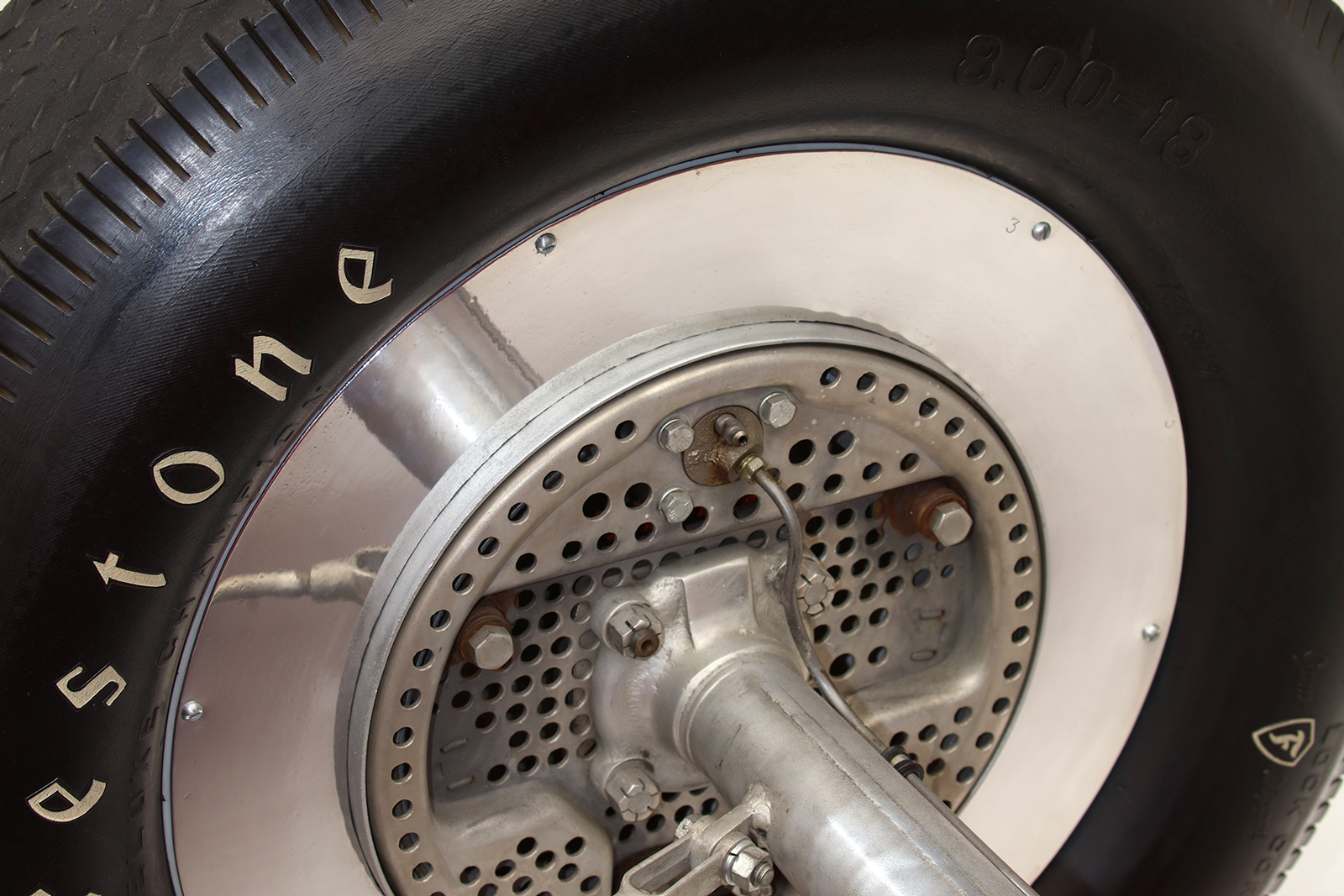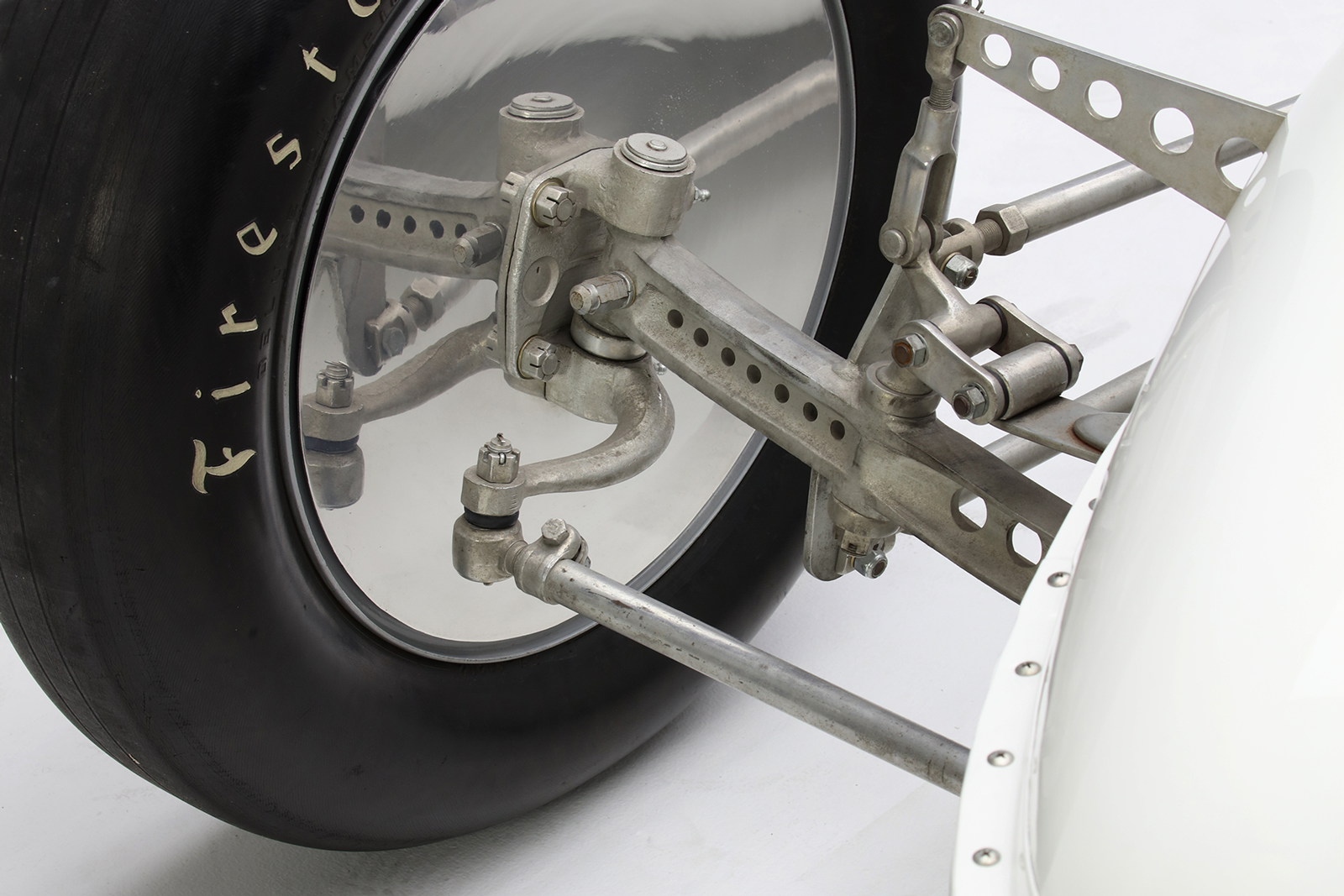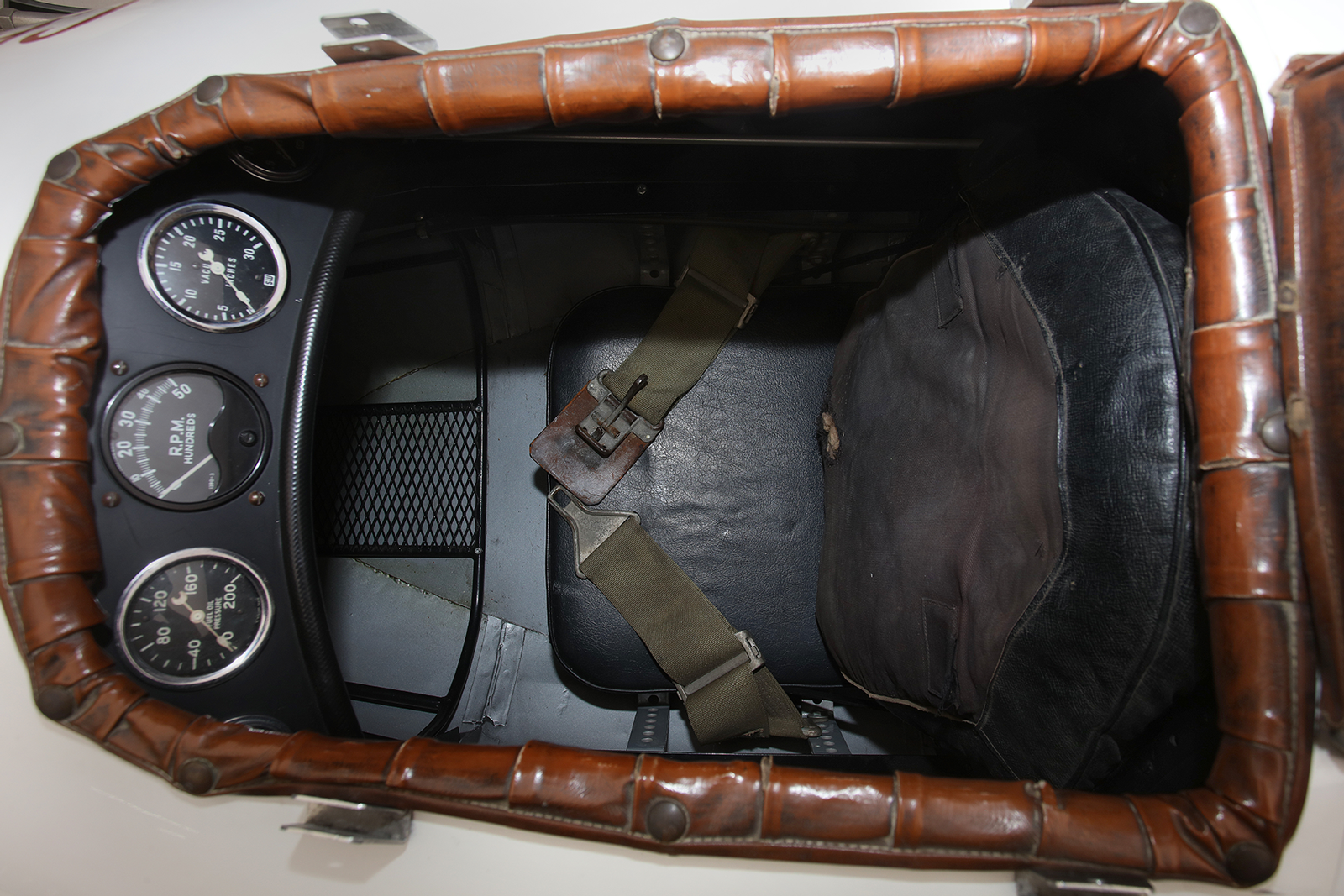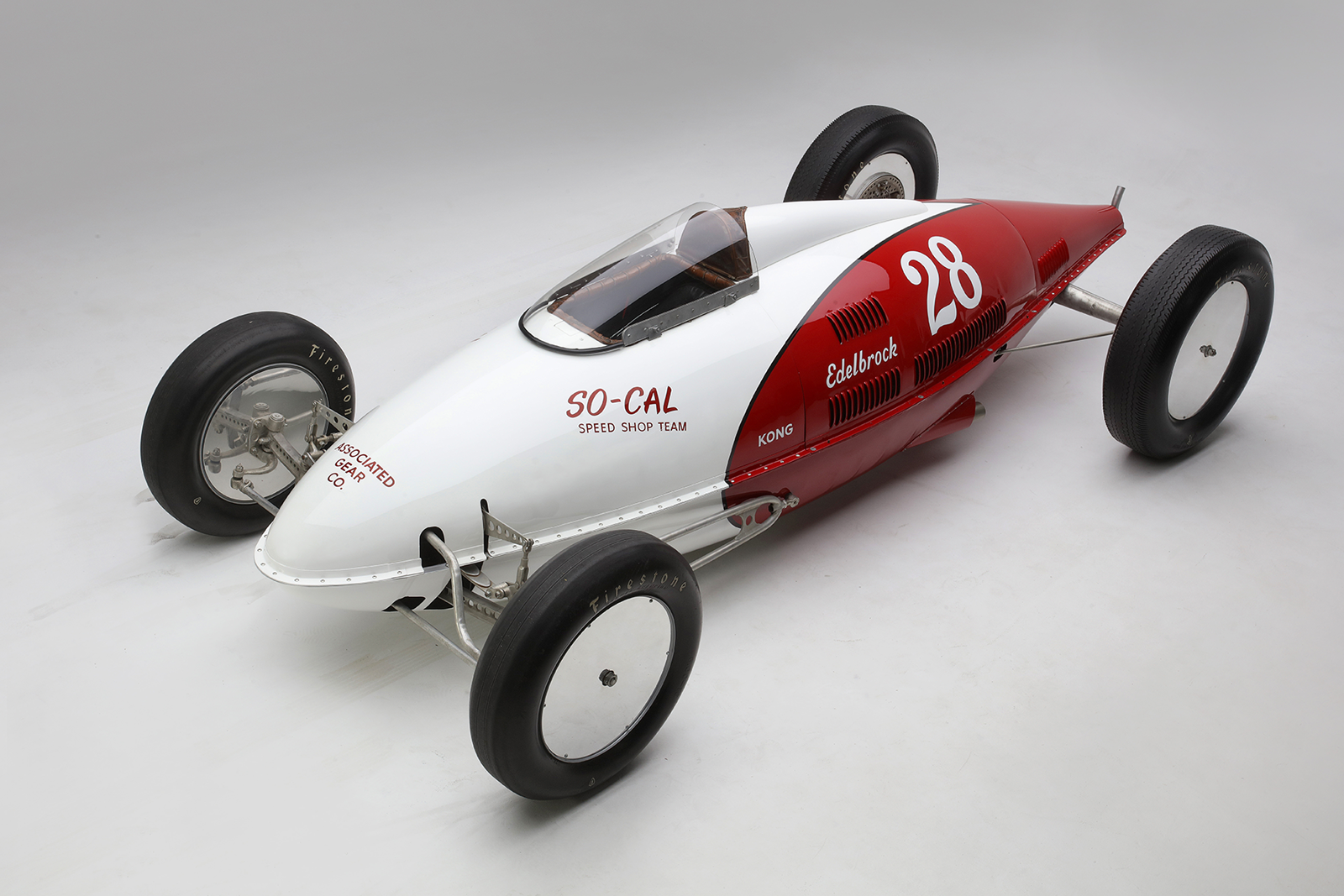“David made the car lighter by drilling holes in everything. He was drilling the backing plates of the brakes, stuff that nobody had done before.
“Rather than chrome the chassis – I always thought racers should be something different – we cad-plated it all. It made it unique.”
The body of the belly tank body was cut to allow the whole car to sit lower to the ground, while the Plexiglas cockpit canopy came from a Goodyear racing plane.
It wasn’t the only element to feature a distinctly aeronautical flavour: as before, many parts were picked up in the same surplus stores that sold the tanks themselves, with the steering wheel being a flight yoke from a P-38.
By 1952 the new Lakester was at the peak of its development, with a cutting-edge chassis and three ripping flatheads with which to contest classes A, B and C.
The venerable Bobby Meeks built V8-60 gamely soldiered on in Class A, while the big 289cu in Mercury V8 would challenge for top honours in Class C.
The team worked from dawn until dusk, waking in the dark and racing through the blistering heat of the day, labouring late into the night to change engines in the parking lot of their motel.
By the end of the week their work had paid off: “We ran three engines at Bonneville and had three first places.”
But class wins weren’t enough for the So-Cal team. The glory always lay in setting new records, and in Class C the Lakester faced a formidable new foe.
“We were up against Ray Brown’s belly tank and he was running the new big Chrysler Hemi against our flathead. We had a hell of a battle with him on that.
“There wasn’t a hot rodder in the world that didn’t realise that the hemispherical combustion chamber was the answer. We were all running these flatheads that couldn’t breathe worth a damn, that’s why we were port relieving them and stuff. Everybody knew the Chrysler was the future.
Luckily it was the Hemi’s first year and they hadn’t perfected all the new speed secrets yet, so we had a chance.”
With DeLangton drafted to Korea, Xydias shared driving duties with Clyde Sturdy. “We were taking turns on the record runs,” says Xydias.
“I would drive down and he’d drive back. We were both nervous in those days – we were going faster than we ever thought we would. We were kidding each other about taking nerve pills!”
It all came down to the final day, with one two-way run from each car to settle the duel once and for all.
“On the record run on Sunday I drove it down, and I was very happy when I got through the traps,” says Xydias.
“I thought, ‘Oh good, I’m through now for the week and that’s it, hopefully we can break the record coming back and everything will be great, ’so I got out of the car.
“When it came time for Clyde to get in for the return he says, ‘You know, I’m just too nervous, I can’t do it. I just can’t do it, you’re going to have to.’ We started giving each other fun and teasing, and finally I got back into the car.”
For four days the two teams had been duking it out, leapfrogging each other in the standings and pushing the envelope of performance.
On Friday afternoon the Lakester posted a one-way speed of 198.34mph, and by Saturday Brown had pipped them with a better average of 197.88mph, setting up a grandstand finish: all or nothing.
In a final bid to capture the record, Meeks upped the ratio of ‘juice’ to 40/60, a do-or-die dose of nitromethane that would push the flathead to the very limit.
Incredibly, the engine withstood the punishment, clocking the fastest time of the day going into a headwind – but Xydias still had to make it back. Screaming for the line, it looked as if So-Cal was about to make history once again.
“Then we tulipped the valve!” Xydias laughs. “That’s part of the flathead problem, the valves get so hot that they tulip. And there went the record. That was our last run at Bonneville Salt Flats that year, but we went home with six awards: two records, three first places and Best Appearing Car and Crew.”
Sturdy, having bought-out Batchelor, walked away with the Lakester and continued to race it using his own engine before it finally succumbed to the inevitable and was no longer competitive.
“Bruce Meyer restored the Pierson Brothers Coupe and that’s what got everybody in the collector-car business interested in hot rods,” explains 98-year-old Xydias.
“After the Coupe was so successful he wanted to find the belly tank, and I knew where it was. We went down there and got it and he took it up to the mountains where he was working and restored the car with Pete Chapouris.
“Wally Parks and I would get in the car and go up there and have biscuits and gravy at their little restaurant and just had a great time. We’d go and watch Pete work on the car and try to help him by remembering what went where.
“It was one of the fun times of my life, watching Bruce and Pete restore that car, and the fame it got again at Pebble Beach. It was wonderful.
“It was a great run with the belly tank, and it’s still there for people to enjoy looking at. That’s the good part.”
Images: James Mann
Thanks to Alex Xydias; Bruce Meyer; Petersen Automotive Museum
READ MORE
Gypsy Rose: queen of the lowriders
Why this is no ordinary Citroën Traction Avant
Continental shift: driving the Lincoln Continental
Greg MacLeman
Greg MacLeman is a contributor to and former Features Editor of Classic & Sports Car, and drives a restored and uprated 1974 Triumph 2500TC
